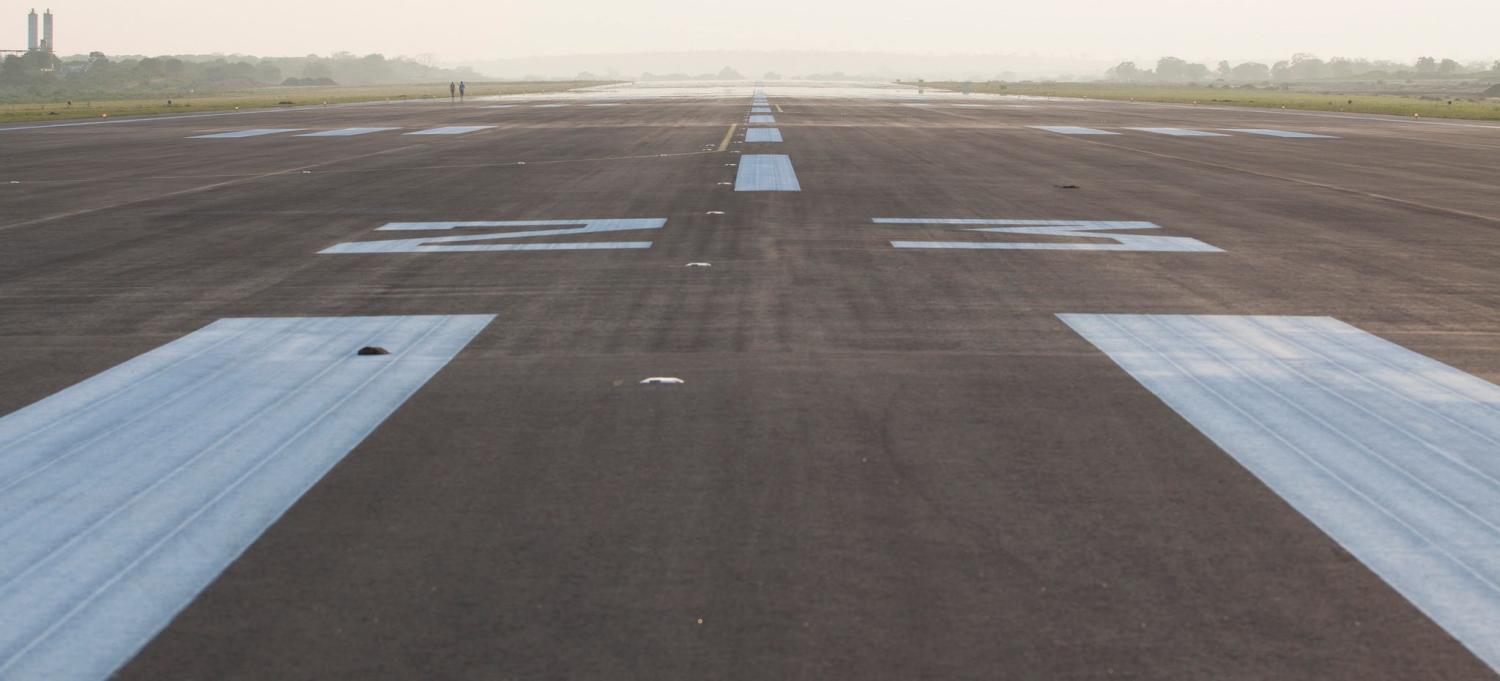Previously obscure Indian Ocean fishing villages such as Hambantota, Gwadar and Kyaukpyu have suddenly been transported into the glare of international media attention as China, India and others compete for control over ports across the region.
But competition over critical infrastructure isn’t just confined to the maritime realm. In fact, access to airfields is just as essential to allow military aircraft to cover the vast distances across the Indian Ocean. This is why China and its competitors are paying ever more attention to securing access to airfields and to deny access to others.
As a ‘new’ power in the Indian Ocean, China has the biggest need to secure air access to fulfill multiple strategic imperatives. It needs staging points for evacuations or other operations to protect Chinese nationals, and for maritime air surveillance in support of its naval presence.
The PLA Air Force is only starting to make its presence felt. It participated in the 2011 evacuation of some 32,000 Chinese from Libya, staging through Sudan (which likely strained the PLA Air Force’s capabilities). The PLA Air Force also participated in the 2014 search for Malaysian Airlines MH370 out of Perth.
These are baby steps. The PLA Air Force faces a steep learning curve and is well behind the PLA Navy in experience and capabilities (such as air-to-air tankers) necessary to conduct long-distance operations.
Like the PLA Navy, the Air Force faces considerable geographic disadvantages in the Indian Ocean stemming from the distance from Chinese territory. It simply can’t reach very far into the Indian Ocean using Chinese bases. This means that PLA Air Force will require assured air access points in several locations in the region, including in the east, central and western Indian Ocean, just as the PLA Navy is looking at its maritime access needs.
A key driver of the PLA Air Force’s presence in Africa will likely be so-called Military Operations Other Than War, particularly civilian evacuation and protection operations. Although the PLA Navy now has a base in Djibouti, the PLA Air Force has to share Djibouti airport with the US and others. From Beijing’s perspective this is not ideal.
Elsewhere in Africa, the PLA Air Force may have also secured access arrangements in conjunction with China’s construction of airports across the continent, including in Sudan, Ethiopia, Zimbabwe, and Mozambique. China may soon acquire operational control of some airports, such as in Lusaka, Zambia (although this has been officially denied).
Another important PLA Air Force role will be to support the PLA Navy’s regional presence. Naval bases need assured and efficient air access for the transport of people and goods such as spare parts. Naval operations require maritime air surveillance and protection. This may have been a factor in China’s involvement in building airports near Hambantota (Sri Lanka) and Gwadar (Pakistan), both of which are seen as potential Chinese naval facilities.
China has funded the construction of a new airport near Gwadar. This, and the new Pakistan Naval air station at nearby Turbat, could help serve a PLA Navy presence in Gwadar port, as well as being a staging point to extend the PLA Air Force’s reach across the Arabian Sea and even into the Persian Gulf.
But the Chinese-built Hambantota Airport has not turned out so well. It was never commercially viable, and what has come to be dubbed the world’s emptiest airport saw its last commercial flight in June. Its future is very uncertain. India may have now trumped China by apparently acquiring control of the airport, although negotiations are ongoing. The ability to monitor and control air movements from Hambantota Airport would substantially reduce the value of Hambantota as a naval base for China.
Last week, the Indian government airport authority announced it was pitching to operate Palaly airport in northern Sri Lanka, although this was denied by Sri Lanka. Palaly might have potential military value for India, but just as important will be India’s ability to pre-empt any future Chinese presence.
The Maldives has also become a focus for intense strategic competition, with air access rights being a key issue. For a decade, the Indian Navy has maintained helicopters at airfields on the islands of Gan and Laamu. But since a political crisis earlier this year, the Maldives government has been trying to force them out. Delhi suspects this may be an effort to clear the decks for a Chinese air and naval presence.
Indeed, China’s presence is growing throughout the Maldives. In 2012, a Chinese company took over redevelopment the Maldives' main airport near Male, displacing an Indian company that had the contract for that project. This could give China de facto control over air access to the capital in a crisis.
China has now proposed building a new port and airfield on Laamu Atoll in the southern Maldives. If these facilities were available for military purposes, they would allow the PLA Air Force to conduct maritime air surveillance over large portions of the Indian Ocean, including keeping watch over the US air and naval base at Diego Garcia. That would not be a good outcome for Australia.
The newly-elected government in the Maldives may well reverse the country’s drift into China’s strategic sphere. But more than likely it will be just another chapter in long-term strategic competition between India and China across the region.
